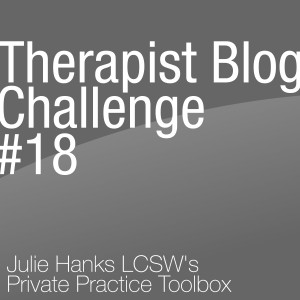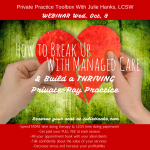A sizable social media following demonstrates that you are a reliable and respected source.
Once you've set up your social media platforms of choice (Facebook, Twitter, Instagram, etc.), building a group of dedicated followers takes time. Though it may be discouraging to initially only have a few "likes" on your page, consistently creating and curating content and growing your following is a valuable strategy that can pay off. One of the objectives of expanding your readership (gaining more followers on social media) is raising your visibility in the community and attracting more clients. But beyond this, having a loyal audience can help bring you additional professional opportunities. Here's how:
Writing for reputable sites and outlets is one way to secure multiple income streams for yourself. In my own life and career, I am grateful for the opportunity to be a regular contributor for Psych Central and Answers and also to frequently write for other publications. And the reason that I'm able to have these kinds of additional professional experiences is because of my social media following!
Social Proof of Relevance
When I approach a site, I can better convince them to allow me to write for them if I can demonstrate that I have a substantial readership. For example, I point to my 11,500+ Twitter followers and 2,400 followers on Instagram as evidence that I have an audience that cares about the things I say. When I write for a well-known website, I then share that article to my own followers, which increases traffic for both the site and for myself. This symbiotic relationship is possible because I've first built my own social media audience.
Demonstrates Your Expertise
In addition to showing the numbers, having a body of work you can draw from is critical when seeking to expand your professional opportunities. If you only have a few posts on your blog, you haven't yet established yourself as a credible writer. But by regularly creating and repurposing material, you have existing content to prove yourself as a trusted source. Also, your blog and other articles is what you are sharing via your social media platforms. The only way your followers will remain loyal readers is if you are consistently providing them with relevant material.
Attract Professional Opportunities
One unexpected result of building a social media following is that professional opportunities that I want are coming to me. Because I have a large body of online work, an engaged social media following, people who are seeking someone with my expertise can easily find me online. I've also heard several amazing stories of colleagues who have had publishers read out to them and offer a book contract because of their online presence and social media following.
Having a dedicated and engaged social media following is an excellent strategy to securing professional opportunities separate from clinical hours. Your online material can be "liked," re-shared, and re-pinned, and you can show the number of followers you have as evidence that you are a reliable source of information in your field.
What are YOU doing to build your social media following?
Visit the new PrivatePracticeToolbox.net for webinars and consulting services
Get practice tips and blog updates in your inbox. Sign up for the Private Practice Toolbox Newsletter here.
Join my Private Practice Toolbox Facebook group and connect with 3200 therapists around the globe in 2 simple steps:
1) Click request to join the group and
2) Fill out this brief questionnaire before you’ll be added to the group.







As healers, we genuinely like to do our work. Guiding clients through the therapy process and seeing them make progress is why we do what we do. But if you're in private practice, you know there's a lot going on in the back end and that it's crucial to run an efficient and organized business.